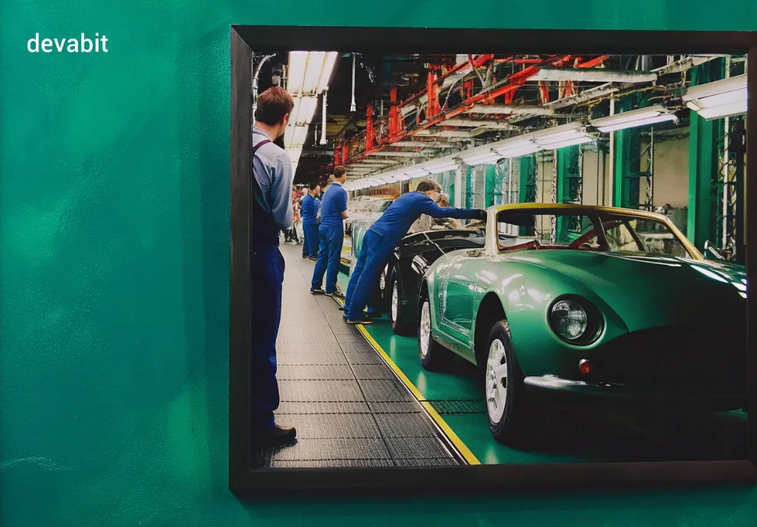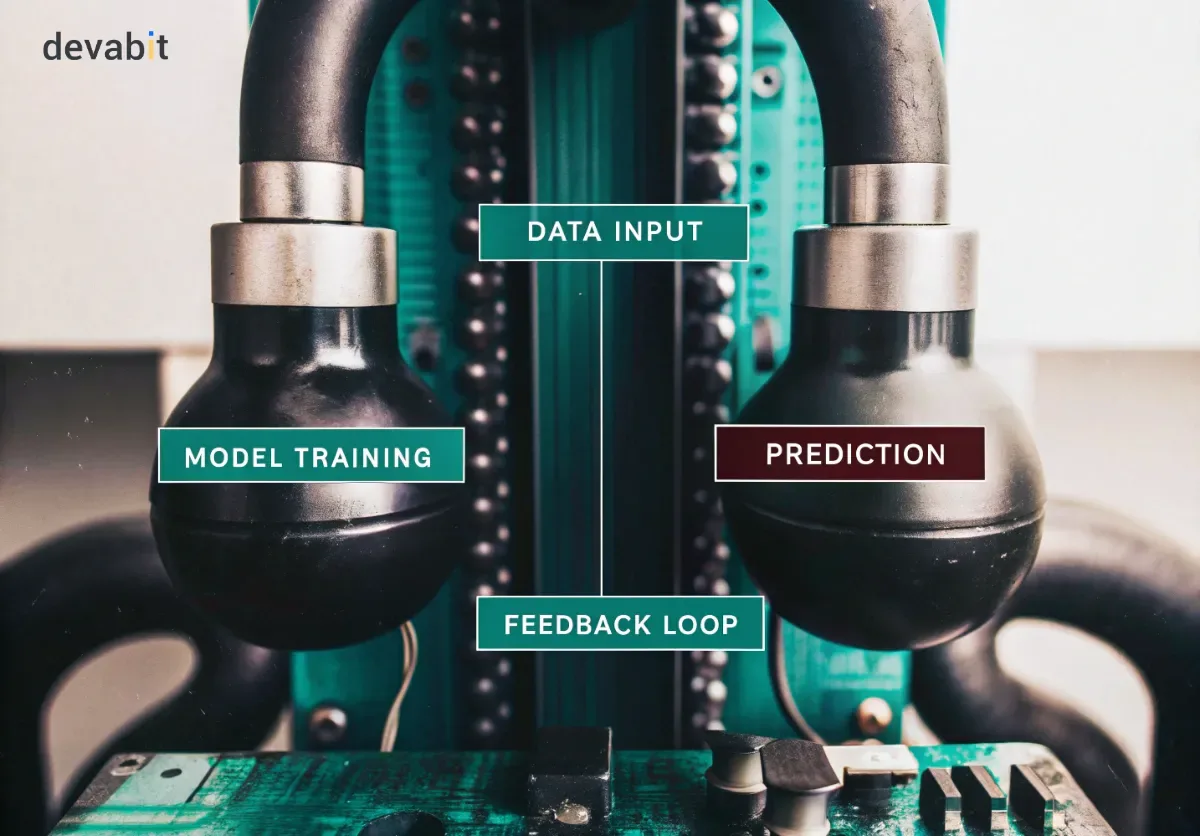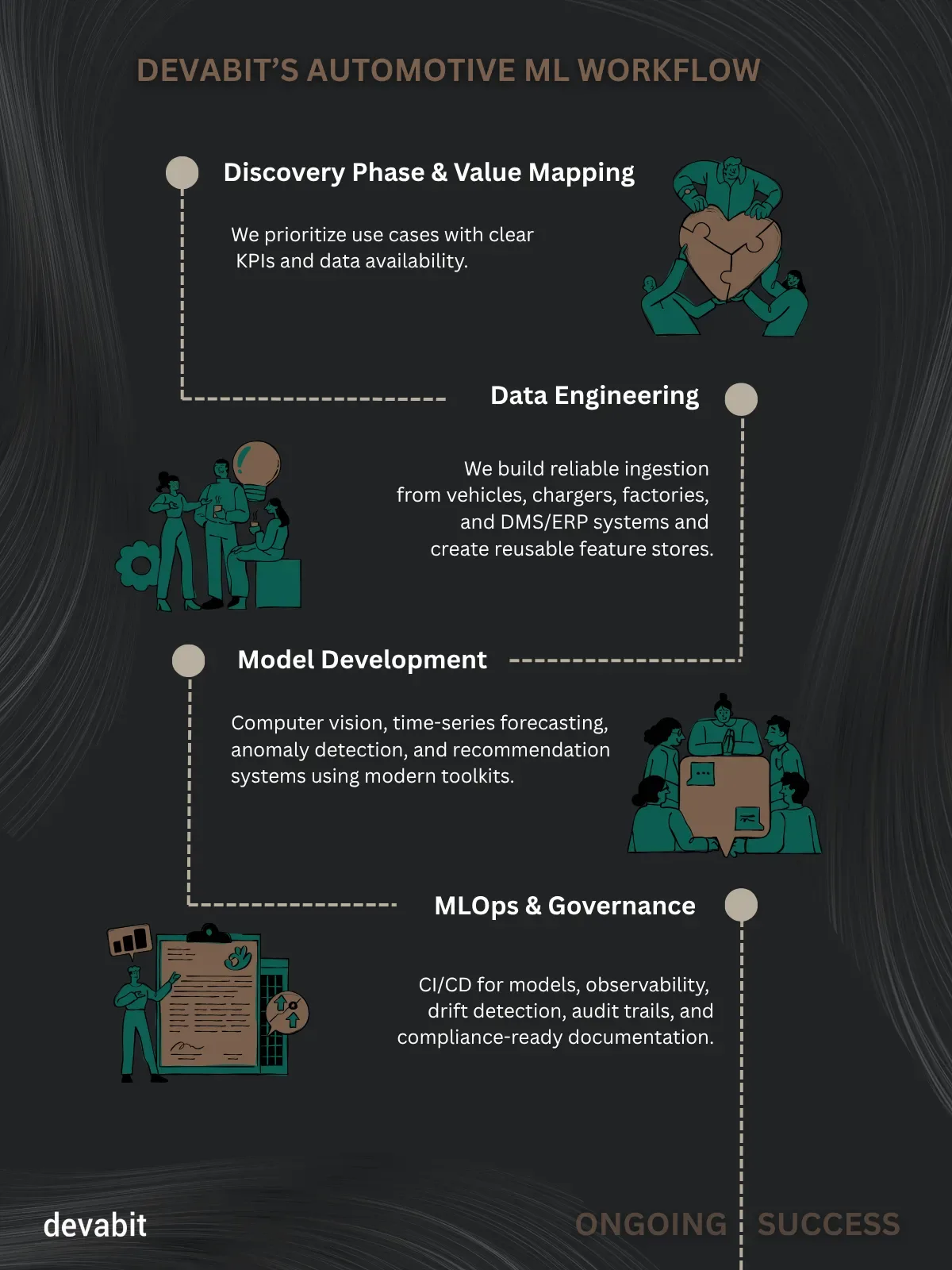Automotive ML: 3 Uses of Machine Learning in the Automotive Industry
Have you ever wondered about the scope of changes in the automotive sector over the past century (spoiler alert: automotive ML plays one of the leading roles in this transformation)? From horse-drawn vehicles and steam-powered trains to autonomous cars and bullet trains, the automotive industry has undergone multiple modifications to look the way it does today. Still, one of the most influential factors in this transformation journey belongs to data. Equipped with cameras, radars, LiDARs, telematics control units, and many other data collection mechanisms, modern vehicles generate terabytes of data utilized for a multitude of purposes, ranging from automotive manufacturing and supply chain to predictive vehicle maintenance and automotive data management. Thus, automotive ML is no longer a terrifying innovation that exists within the walls of R&D labs, it is the reality we live in today. This article introduces 3 exclusive uses of machine learning in the automotive industry, demonstrating that automotive ML creates a real impact you should not ignore.

What Is Automotive ML?
Automotive ML refers to the use of a machine that learns from various types of past data (e.g., either automotive statistics or data generated by connected vehicles/automotive services centers) in order to autonomously learn, thereby performing specific tasks while increasing the accuracy of the output.

Automotive ML Explained in Simple Terms
At devabit, we have mastered the art of explaining complex concepts in simple words, so let us sort things out for you. Today, we are going to talk about automotive ML through the prism of a kid in a family.
Suppose the car is a kid. He is already capable of cooperating with his family members and the world around, but he is still learning. The car's sensors are the kid's senses (e.g., cameras — eyes, radar/lidar — depth sense, mic — ears, etc.). Meanwhile, an ML model is an allegory of his brain: it learns behavioral patterns based on experience. The family is looking through family photo albums (in the world of automotive ML, this is training data) in order to teach the kid to recognize various objects: "that's a tree," "that's a bike" (read as "labeled items" if translated to automotive ML terminology). "Here's the neighbor's son, here's where you can play together," — parents' advice and house rules are automotive ML maps & rules. Accordingly, the kid's judgment in the moment (recognize a family member → predict it will visit the household on vacation → call him/her or ask parents about him/her) is the equivalent of automotive ML real-time decisions (recognize → predict → act). Over-the-air (OTA) automotive ML updates can be explained through the following scenario: a child hears what others have learned and becomes smarter.

3 Unique Uses of Automotive ML
Whoa, not an easy task to find similar patterns between the work of automotive ML and a kid's brain. Hopefully, we have managed to keep things straightforward while describing the complex nature of automotive ML in simple terms. Now, it is finally time to research the real uses of machine learning in the automotive industry. Ready, set... Let us start the journey!
1 / Automotive ML as a part of predictive maintenance and car service optimization.
As we have already sorted out, automotive ML offers a perfect algorithm in terms of the "recognize → predict → act" workflow, which is why our automotive software development team implemented it as a part of the dynamic pricing and capacity management platform we developed for a US client. To put it briefly, automotive ML analyzes large amounts of data like VIN, mileage, and service history, combined with data collected from automotive DMS (e.g., CDK Global, Tekion, Dealertrack, and Fortellis, to name a few), and data received from service centers (free time slots, busy hours, etc.) to produce custom service offerings for vehicle owners. Hence, this dynamic pricing and capacity platform is a perfect example of how automotive ML technology can benefit various parties in the automotive lifecycle, like both car owners and repair technicians. Over and above that, the solutions handle large amounts of vulnerable data, which are securely protected thanks to the robust mesh of computer vision, ML, and agentic AI cybersecurity practices.

2 / Automotive ML for car manufacturing demand forecasting.
Quite similar to the example described in the previous paragraph, car manufacturing automotive ML highly relies on data received from various channels in order to track demand (e.g., seasonality, promotions, macro signals) and timely react to it (again, here the "recognize → predict → act" workflow comes into action). In this way, automotive ML enables hierarchical forecasting with exogenous features, reducing stockouts and overstock, cutting working capital while protecting fill rates in the car manufacturing sector.

3 / Automotive ML for ADAS/autonomous perception.
The use of automotive ML for ADAS refers to the utilization of specific software to ingest sensor data and transform it into real-time scene descriptions (e.g., what objects are on the road, how fast they are moving, which way is the optimal route, etc.). Such automotive ML models are trained on large driving datasets. Then, they are optimized to run on in-vehicle chips with very low delay and power use. Automotive ML models for ADAS output results with confidence estimates and use redundancy, allowing the system to degrade gracefully in rain, snow, glare, or partial sensor failure. Performance is enhanced over time by labeling and learning from complex cases, retraining, validating, and sending updates to vehicles.

How Devabit Helps with Automotive ML
At devabit, we partner to support teams across the whole automotive software development lifecycle, from raw business concept to actual production. Our north star is a visible business impact: we build the future for smarter vehicles, safer car manufacturing, more satisfied drivers, and innovation-powered roads.

Ready to Explore Automotive ML?
Whether you need to predict service demand, analyze EV insights, or build a next-gen agentic AI cybersecurity solution, we are here to help. If you already have an idea in mind, we can start right away. If you are just at the beginning of your automotive ML journey, we will help with data assessment and a narrowly crafted project scope that paves the way to actual development.

As an expert in automotive data management, we know how to make it work for you. Let us turn your automotive data into a competitive advantage. Contact our consultancy team to discuss your goals and take the first step towards an ML-powered future.
Recent Publications
Don't miss out! Click here to stay in touch.
Our Automotive Expertise

Relevant Articles View all categories
View all categories CONNECT WITH US WE’RE READY
TO TALK OPPORTUNITIES
THANK YOU! WE RECEIVED YOUR MESSAGE.
Sorry
something went wrong



